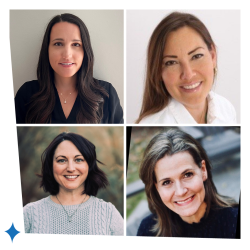If “being more mindful” isn’t already among your New Year’s resolutions for 2024, an expert on the negative consequences of having a “busy brain” thinks it should be, and that intellectual, stress-driven professionals like those who are often drawn to clinical research will benefit from pausing to process their thoughts and emotions more methodically.
As a keynote speaker in May, Romie Mushtaq, MD, (Dr. Romie) founder of the brainSHIFT Institute and the newly named Chief Wellness Officer for Great Wolf Resorts, will share her expertise on stress management and workplace wellness topics with attendees of the ACRP 2024 conference in Anaheim, Calif. She is the author of The Busy Brain Cure: The Eight-Week Plan to Find Focus, Tame Anxiety & Sleep Again (Harper Collins, January 2024), which addresses the cycle of chronic stress, anxiety, and burnout crisis in many corporate environments, and is a proud STEMinist, as a strong advocate for women and girls in the fields of science, technology, engineering, math, and medicine.
Dr. Romie took time recently to answer some questions from ACRP about issues related to workplace stress and how research is leading to better ways to manage them.
ACRP: What’s at the root of the “busy brain” phenomenon? Is it a product of recent times and trends (ever more top-down financial stress put upon increased speed and efficiency, for example) in corporate/team settings, or has it always been there and we’re just better at identifying and addressing it now?
Dr. Romie: I have been studying chronic stress and burnout in the workplace for over six years now. I coined the term “busy brain” as a description of the negative impact of chronic stress creating a specific pattern of neuroinflammation in the brain that leads to this triad of symptoms: difficulty focusing, ruminating anxiety, and insomnia. When we look at the overall mental health data from The World Health Organization and the American Psychological Association, we see that more and more people report chronic stress and burnout in the workplace. Our data collection of 17,000 adults taking the “Busy Brain Test” measured the effects of stress on mental, cognitive, and physical health. Our results were consistent with other data, showing over 82% of participants were suffering from a “busy brain.” We must examine factors in all workplaces such as inability to disconnect from digital devices, a lack of boundaries between work and personal life, and toxic cultures in the workplace.
ACRP: Looking at clinical research settings, where members of trial teams are interacting with human volunteers (many of them facing serious medical situations if not outright crises) in what can be quite complex studies, what from your perspective are some of the dangers of professionals in this field not pausing to practice mindfulness and letting “busy brain” run free?
Dr. Romie: In our research we find that intellectual, success-driven professionals can share a similar pattern when under chronic unchecked stress—the inability to shut down worrying or racing thoughts (ruminating anxiety) that can be coupled with “analysis paralysis.” In the treatment protocol, I give advice about how to take a brainPAUSE during the day and prior to bedtime and be methodical about organizing ideas, to-do list items, and emotions on paper. When we don’t stop to process our thoughts and emotions, persistent compartmentalizing leads to chronic stress and burnout.
Power of Pause: Mindfulness to Transform Individuals, Teams & Cultures
Join Dr. Mushtaq at ACRP 2024 [May 3 – 6; Anaheim, CA], as she offers scientifically proven breath and meditation techniques to alleviate workplace stress, anxiety, and insomnia while fostering improved focus, mood, and sleep. View complete schedule.

ACRP: How do you get buy-in for mindfulness approaches across entire teams and at all levels of leaders and followers?
Dr. Romie: As a Chief Wellness Officer [until recently at Evolution Hospitality], I was able to scale a mindfulness program that had over a 70% adaptation rate in the organization—this was across one corporate office and over 100 hotels in the U.S. and Canada. To get buy-in for a mindfulness program, it takes a cultural movement not just a class or a lecture for Continuing Medical Education credit. The cornerstone of success in our program came from the following:
- Complete buy-in and support from the CEO and entire executive leadership team.
- A dedicated Chief Wellness Officer to create, curate, and teach the programs on mindfulness.
- Identifying and training wellness ambassadors in the company and honoring their hard work.
- Measuring outcomes like associate opinion surveys and transparently sharing the results across the organization.
ACRP: To what degree is our modern understanding of mindfulness a science vs. an art, what inspired you to delve into mindfulness in the first place, and how has it influenced your career?
Dr. Romie: I want to be clear that mindfulness is not an art—it is a spiritual practice that has deep origins in global healing and spiritual traditions. In this case, science is catching up to thousands of years of spirituality. Mindfulness—the training of present-centered awareness, self-compassion, and self-awareness—has now been studied rigorously for its benefits in health and organizational well-being, and for its impactful role in chronic diseases. Mindfulness helped me to heal my mental and physical symptoms of chronic burnout, and today I practice mindful leadership as a corner of my success as a Chief Wellness Officer.
Edited by Gary Cramer



